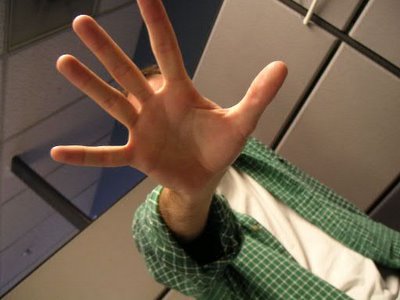The San Andreas Fault runs roughly northwest along much of the length of California, passing beneath the Santa Cruz Mountains to the south of the Bay Area, up along the Peninsula, heading out to sea near the cliffs of Daly City, past San Francisco, coming briefly back beneath dry land at Stinson Beach northwest of here and disappearing for good beneath the waves of the Pacific beyond Tomales Bay and Point Reyes. From the beaches of San Francisco, the fault is approximately 3 miles due west out to sea.
It's a strike-slip fault, which means that the Pacific Plate (to the west) and the North American Plate (to the east) are grinding past each other laterally at speeds of nearly 2 inches per year in some places. The rocks of Point Reyes north of the City most closely correlate to those of the souther Sierra Nevada mountains 350 miles to the southeast. This movement is anything but smooth, of course, and when the landmasses get stuck, the earth near the fault starts to deform, the pressure builds and eventually will release in a sudden shock: the ground jerks and the energy released travels in waves through the surrounding rock at speeds of over 8,000 mph.
The Bay Area is not unfamiliar with earthquakes, of course, and the scenic beauty of the surrounding geography which draws so many people is a direct result of the natural forces at work beneath us. 30-40 tiny quakes are registered every week across the Bay Area. Prior to 1906, major quakes had happened with some regularity, and earthquakes estimated at 6.5 or higher occurred in 1898, 1892, 1868, 1865, 1838, and 1836. Before that, records are less reliable. Since 1911, there has been just one: the 1989 Loma Prieta quake that shook the World Series, collapsed a portion of the Bay Bridge, sandwiched the Cypress Freeway in Oakland, set the Marina District of San Francisco ablaze, and nearly destroyed the town of Watsonville to the south. Still, by some estimates it would take nearly 30 Loma Prieta earthquakes occurring simultaneously to release the same amount of energy as was let loose in 1906.
us. 30-40 tiny quakes are registered every week across the Bay Area. Prior to 1906, major quakes had happened with some regularity, and earthquakes estimated at 6.5 or higher occurred in 1898, 1892, 1868, 1865, 1838, and 1836. Before that, records are less reliable. Since 1911, there has been just one: the 1989 Loma Prieta quake that shook the World Series, collapsed a portion of the Bay Bridge, sandwiched the Cypress Freeway in Oakland, set the Marina District of San Francisco ablaze, and nearly destroyed the town of Watsonville to the south. Still, by some estimates it would take nearly 30 Loma Prieta earthquakes occurring simultaneously to release the same amount of energy as was let loose in 1906.
In 1906 there were roughly 1 million people in the Bay Area, and the death toll from the quake and fires stands between 3,000 and 6,000 people, with 250,000 people left homeless. The Bay Area is currently home to over 7 million people and San Francisco is the 2nd most-densely populated city in the country, after New York.
The USGS cannot predict quakes, but they can measure deformation and strain and they estimate that there's a 62% probability of at least one major quake registering a magnitude of 6.7 or higher striking the Bay Area before 2030.
Is it any wonder it's always in the back of my mind?
*Because this is a blog and not a scientific paper, I feel no need to cite sources. Just know that I'm not making this up. If you want to verify any of my statements, feel free to look it up online your own damn self.
Thursday, April 13, 2006
Suddenly I See
Posted by Zach at 6:16 PM
Subscribe to:
Post Comments (Atom)

1 Comment:
Blah blah blah blah blah quake....blah blah blah plates shifting blah blah blah blah.....
Post a Comment